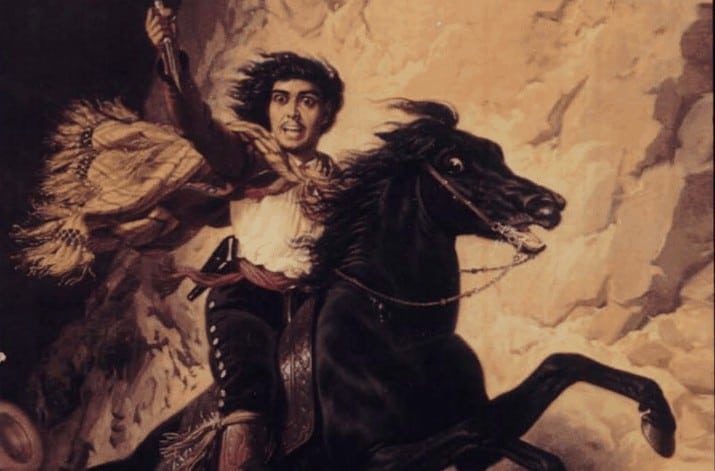Like so many other men during the California Gold Rush, Joaquin Murrieta traveled to the mountains in the hopes that he could earn lots of money. He was just 18 years old at the time- young, bright-eyed, ambitious, and completely in love with his young wife. They wanted to have a family together, and he promised to find lots of gold while his wife took care of their little house.
Since he was one of the first people to pan for gold in that area, he truly was making a lot of money, and they had no reason to want to pack it up early and go home. If he stayed long enough, he could gather enough gold to be a very rich man. He and his wife likely celebrated every time he came home with a new cache of gold, and they would have dreamed of the future under the stars.
Unfortunately for Murrieta, he ran into some very bad timing. In 1848, that area of California was won by the United States in the Mexican-American War.

One day, American men approached Murrieta and his wife at their home and demanded that he hand over his gold and his mining plot. They said that the land was their territory, now, and all Mexicans needed to leave. When Murrieta refused to give up his plot, the men tied him up to a chair, and forced him to watch while they tortured and sexually abused his wife. He had to watch her die from her injuries before he finally escaped from the ropes that tied him. The men left him alive, probably because they would never believe such a young man could do anything to retaliate. He buried his wife and tried to return to his hometown alone.
He returned to his village with a broken heart and empty pockets. He tried to become a card dealer in a saloon, working with these drunk American men he secretly hated so much. One day, his half-brother got a new horse, and he borrowed it to ride into town. A group of American men stopped him and whipped him, saying that he was a horse thief. Murrieta blurted out the horse was not stolen, and that he borrowed it from his brother.
When they heard this, they found his brother, and lynched him in the town square as a horse thief, even though he was innocent. The Americans had killed not just one, but two of the closest people in Joaquin Murrieta’s life. All around him, he witnessed Mexican people who were born and raised in California getting tortured and persecuted by white men. This flicked a switch in his brain that took him from being a good, ambitious young man to one who was hell-bent on getting revenge.

